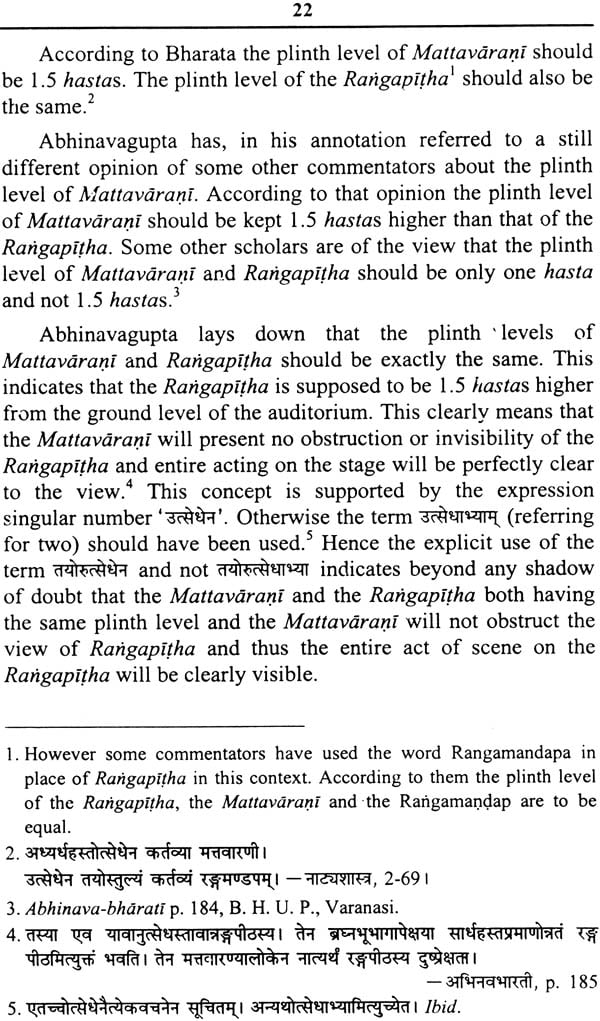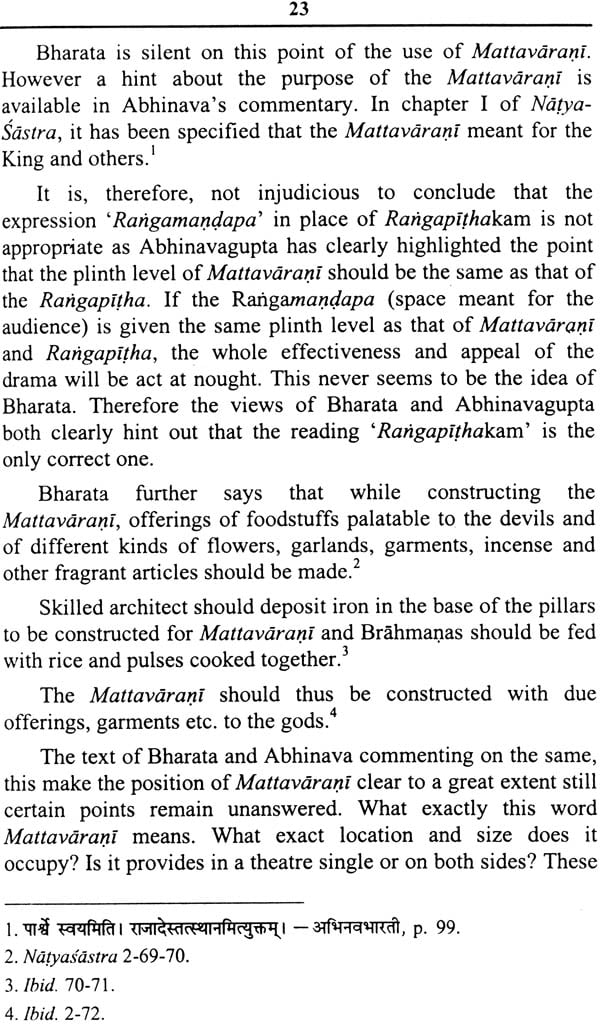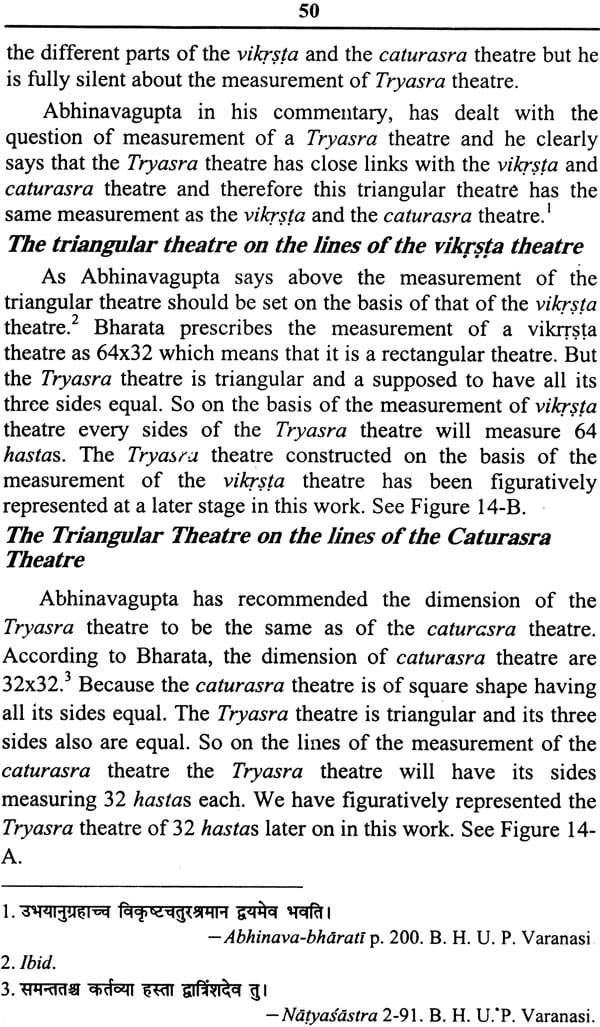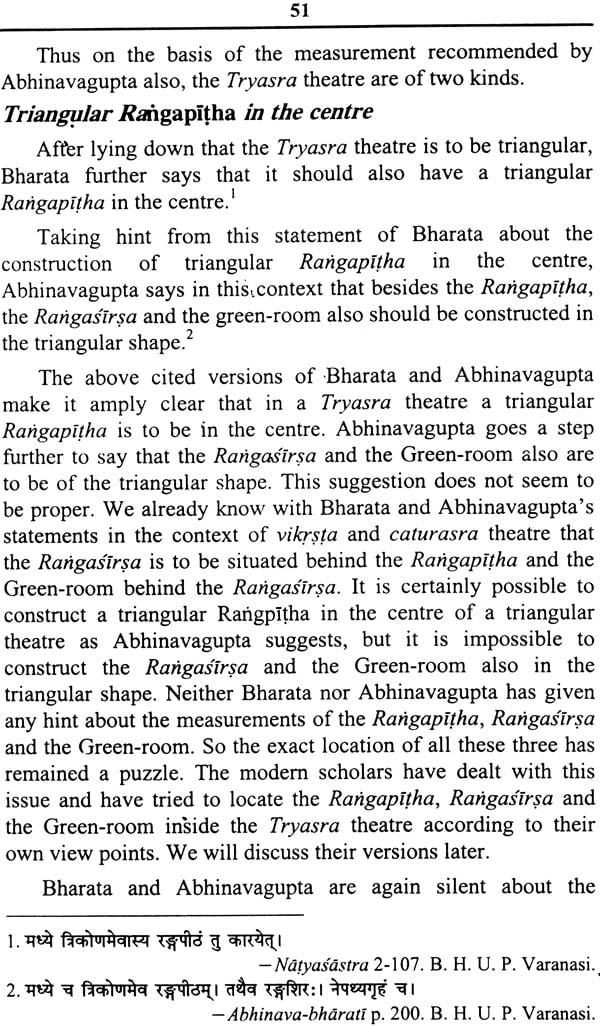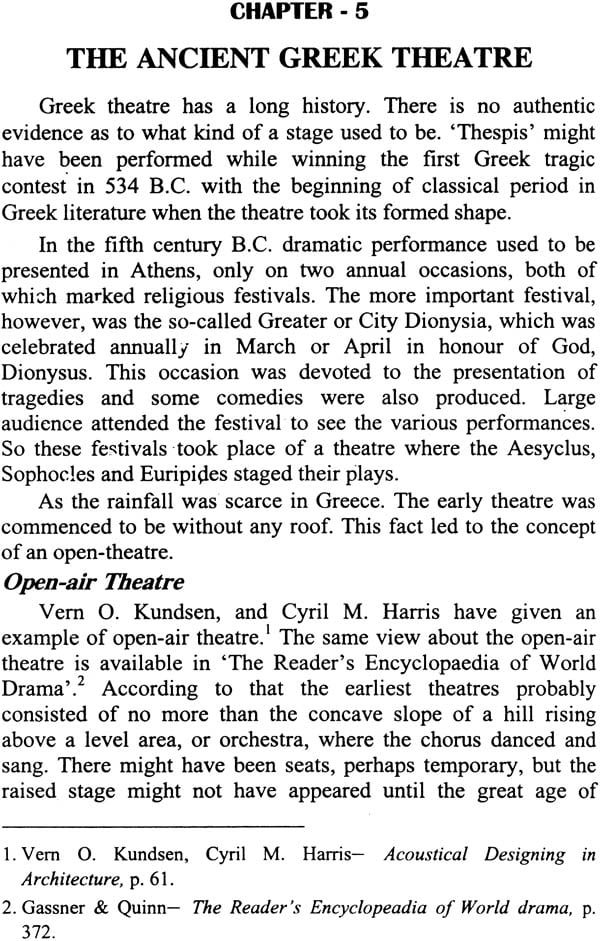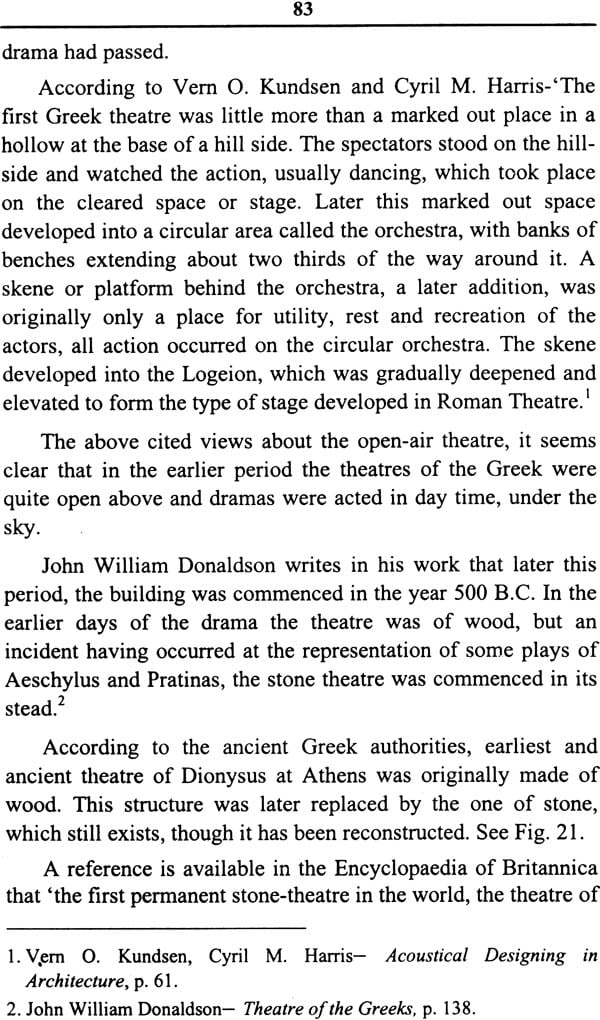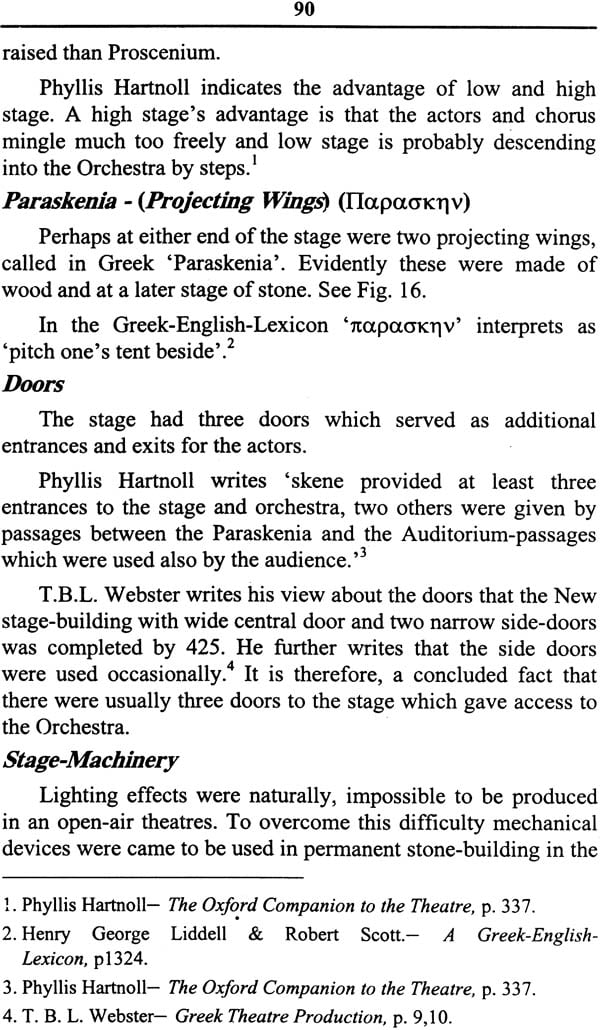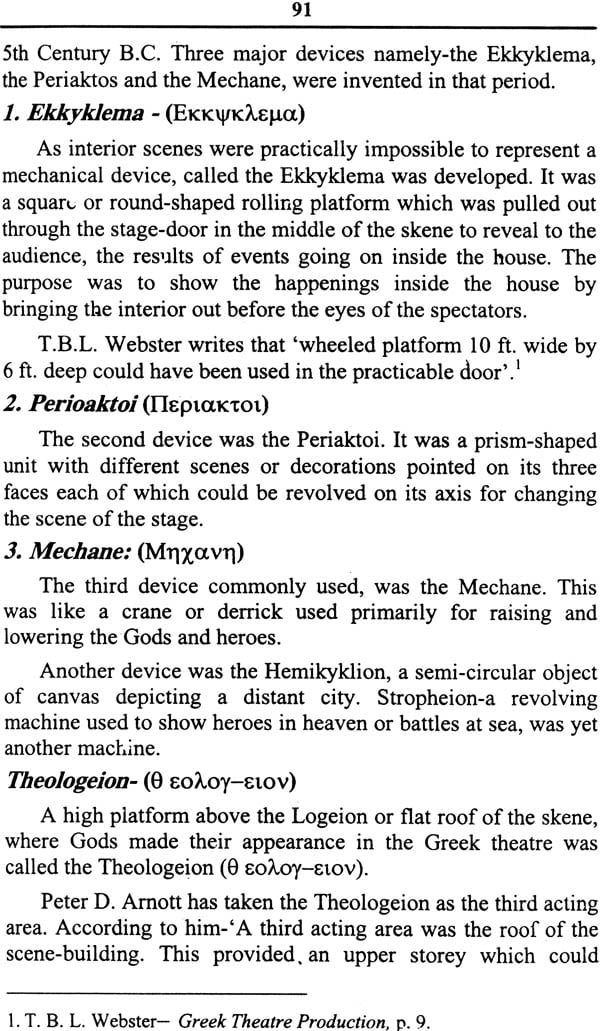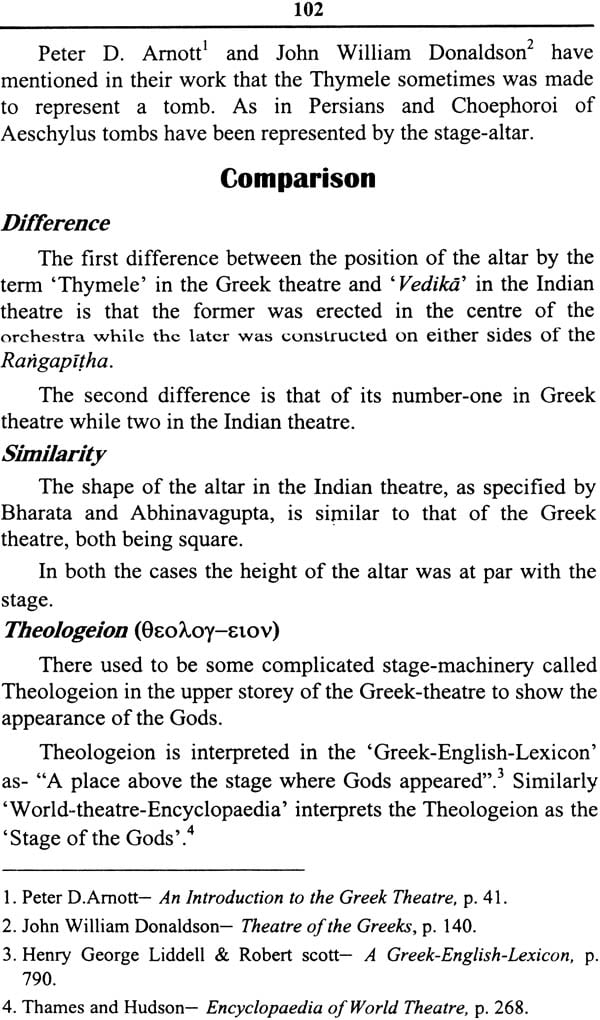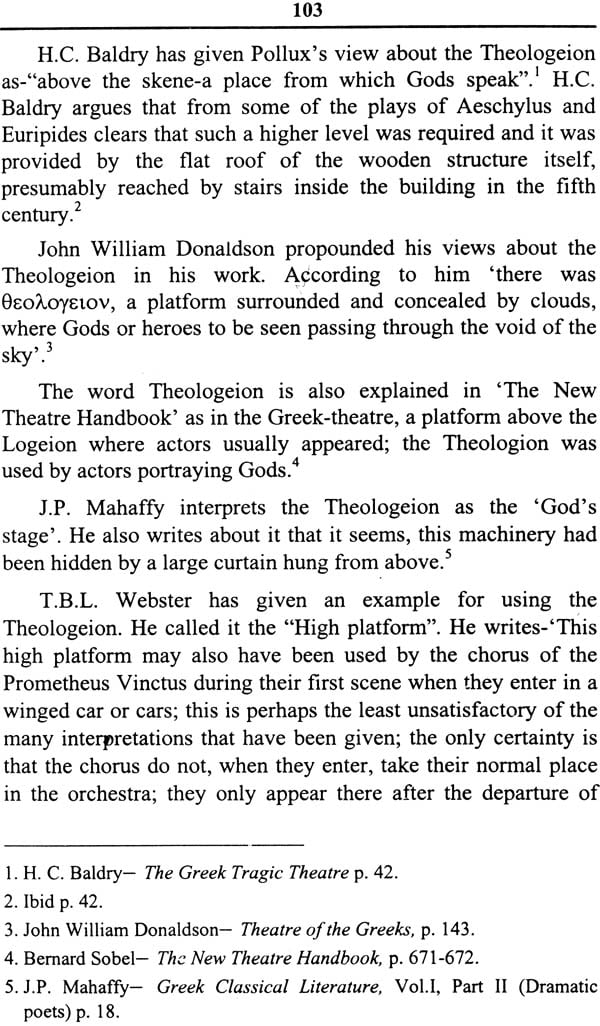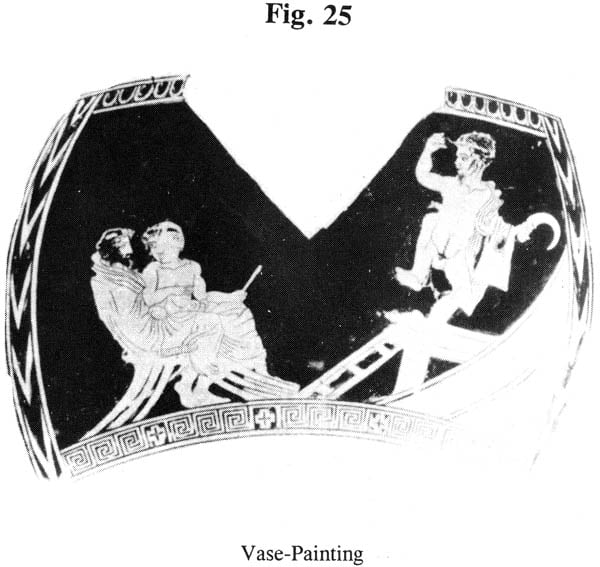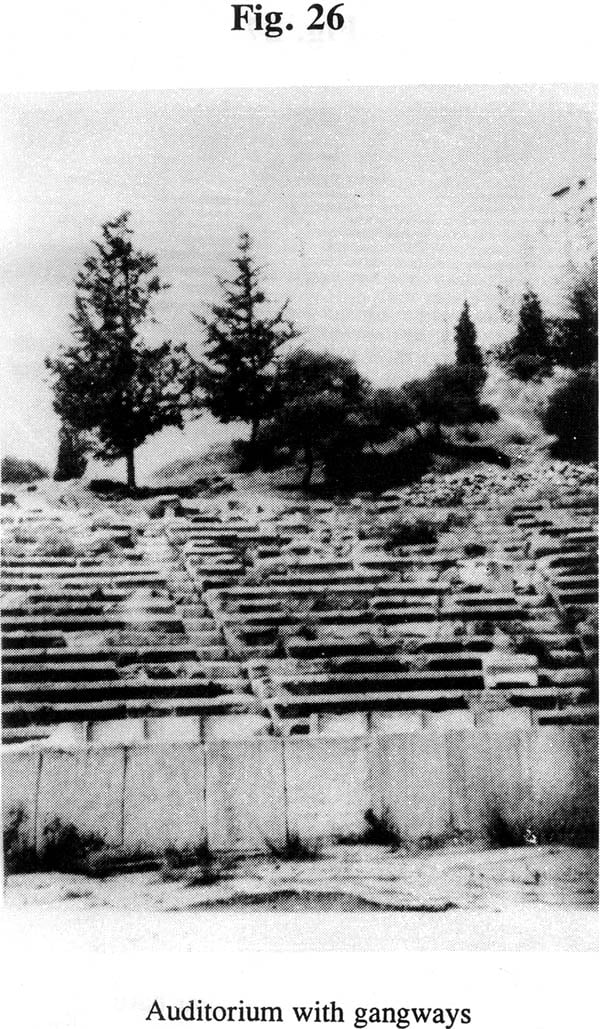
Ancient Greek and Indian Theatre
Book Specification
| Item Code: | IDF856 |
| Author: | Dr. Asha Saxena |
| Publisher: | Parimal Publication Pvt. Ltd. |
| Language: | English |
| Edition: | 1997 |
| ISBN: | 817110145X |
| Pages: | 156 (B & W Illus: 27) |
| Cover: | Hardcover |
| Other Details | 8.7" X 5.7" |
| Weight | 370 gm |
Book Description
About the Book:
The ancient Indian theatre is represented by Bharata's Natyasastra giving its name Natyagraha or Natya-mandapa or Prakasagrha. The present treatise is confined to the ancient period from structural point of view of theatre of both Indian and Greek Drama.
The consists of seven chapters divided into two parts . First part is related to Indian theatre and the other to greek theatre.
The first chapter is introductory. The second chapter deals with the characteristics of theatre. In the third chapter the stage has been defined according to Bharata Muni and other ancient scholars. In the fourth chapter main ingredients of Sanskrit stage are discussed in detail and compared with that of Greek theatre.
Fifth and Sixth chapter deals with the Greek theater and its comparison with Sanskrit stage in detail.
The last chapter concludes the comparison between the sage and theatre of Indian and Greece in ancient times.
In ancient times, Dramas and plays were a source of pleasure and entertainment for the people in both India and Greek society. Along with the other sorts of entertainment, they did have a link with religious feelings.
In ancient times the Drama and plays were staged in the open places in both the lands. Gradually it was realised to create particular place where plays might be staged.
The topic of my research is "A Comparative Study of Ancient Greek and Sanskrit Stage." Late Prof. R.S. Tripathi suggested this topic. I worked under the guidance of Prof. Dr. P. Anand Shastri of Aligarh Muslim University.
In my present research work, I have discussed ancient Greek and Sanskrit stage. The term stage has been taken in the sense of theatre, English word derived from Greek word 'Theatron' meaning 'a place for seeing'. In Sanskrit Natyasastra stage is represented by the words Natya-grha or Natya-mandapa or Prakasagrha. My research is confined to the ancient period of structural point of view of stage of both India and Greek Drama.
This thesis consists of seven chapters divided into two parts- first is related to India Natyagrha and the other to Greek theatre.
The first chapter is introductory of structural particulars The second chapter deals with the characteristics of theatre. In the third chapter the stage has been defined according to Bharata Muni and other ancient scholars. In the fourth chapter main ingredients of Sanskrit stage are discussed in detail and compared with the Greek theatre. Fifth and Sixth chapter deals with the Greek theatre and its comparison with Sanskrit stage in detail.
The last chapter concludes the comparison between the stage and theatre of India and Greek in ancient times. In my opinion, it can be asserted that some sort of influence had its way through the early cultural intercourse of both the peoples.
I acknowledge my sincere gratitude to my supervisor Prof. Dr. P. Anand Shastri who took great interest and affectionate care.
I wish to extend my gratitude for encouraging me in my research to my mother, brothers, husband and Dr. D.K. Jain obliged me by helping in the completion of this work.
| Preface | vii-viii | |
| | ||
| Chapter I | Theatre, Vikrsta Theatre-its chief characteristics | 1-30 |
| Chapter II | Caturasra Theatre-its chief characteristics. | 31-48 |
| Chapter III | Tryasra theatre-its chief characteristics | 49-58 |
| Chapter IV | Main Page of Indian Theatre Kaksya-vibhaga, Rangasirsa and Rangapitha, Mattavaranis and Curtain in Sanskrit and Greek | 59-81 |
| | ||
| Chapter V | Ancient Greek Theatre | 82-93 |
| Chapter VI | Main parts of Greek theatre and their comparison with Indian Theatre. | 94-104 |
| Chapter VII | Conclusion | 105-109 |
| Bibliography | 110-115 |
